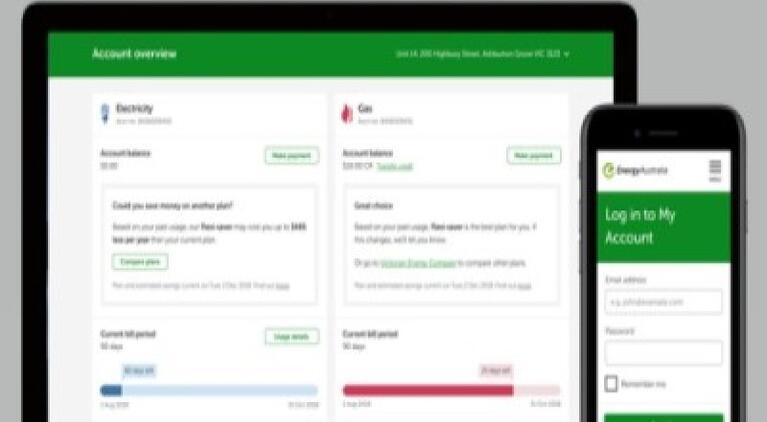Understanding what you pay
In the world of energy, a tariff is simply the price you’re charged for the energy you use at your business. Tariffs vary and depend on the type of meter you have and who your energy distributor is.
What’s a distributor?
Your energy distributor is the company responsible for the poles, wires and gas pipes in your area. You’ll find the name of your distributor at the top right hand side of your energy bill.
Electricity tariffs for business
Different tariff rate types apply and depend on where your business is (your distributor zone) and the type of meter you have there.
What’s on your bill
On your bill you’ll see that electricity tariffs are divided into two parts. These are your supply and usage charges.
- The supply charge is a daily service charge to supply electricity to your business
- Usage charges are rates charged for the actual energy your business uses, and/or a demand charge based on your business’ electricity demand on the network
- Some tariffs - such as time of ese - have variable usage rates depending on the time of day you use electricity.
Business electricity tariffs in detail
With time of use, different usage rates are charged for the electricity you use at different times: usually including off peak, shoulder and peak. For some customers time of use rates can have a demand charge applied as well (find out more about demand charges in the FAQ below). You may not always have all of these components to make up your time of use tariff structure.
- Off peak – charged when the electricity network has low usage, such as overnight or during times with high solar export.
- Shoulder – usage rates that are usually a bit cheaper than peak rates and are available in most states. Shoulder times can be a period during the day on weekdays or weekends. These times usually differ between states and distribution areas.
- Peak - charged when the electricity network has high usage, such as in the evening.
Tip You can get the most out of your time of use tariff structure if you use electricity outside of peak times as much possible. If you have a smart meter, time of use can be set as the default tariff
This means the rate stays the same whatever time of day or year your business uses electricity. This rate is usually lower than peak and might suit you if your business operates during weekdays.
Off peak refers to lower electricity prices during certain times, generally when electricity network usage is low. Off peak times usually are at night or weekends and vary depending on your area and meter type.
Controlled load electricity refers to electricity being used by a stand-alone item, like an electric hot water service, electric slab heating or an irrigation pump. Controlled loads are recorded separately and can be billed at an off-peak rate.
Find out more about controlled load.
Demand tariffs, or demand charges, are billed based on your highest demand for electricity in kilowatts (kW).
This will depend on the type of meter you have:
- with a 5- or 30-minute smart meter, the demand charge will be based on your highest demand 30-minute interval during peak times.
- with a 15-minute smart meter, the demand charge will be based on your highest demand 15-minute interval during peak times.
Demand tariff structures are designed in most cases to encourage less electricity use during peak demand times when there’s more pressure on the electricity network. These structures vary and are set by your electricity distributor.
Why do we need demand charges?
The electricity networks need to be able to cope with those extreme hot days, so the distributors need to invest in updating and maintaining the network to handle the highest peak of electricity demand, even if it’s only for a few days of the year.
Imagine our electricity network is like a sports stadium. It would be built to handle demands for a grand final (highest peak demand). The overall cost would be based on a full stadium of 100,000, not the average number of 50,000 people who use the stadium throughout the year.
Would demand charging suit my business needs?
A demand charge could suit your business if you’re a high electricity user and can reduce usage during peak demand times on a weekday, when the demand charge is measured. However, if your instantaneous electricity usage goes above the demand limit, you’ll have higher demand charges.
Tip
Demand pricing is available if you’re eligible and have a smart meter.
A feed-in tariff (FiT), also known as a solar buyback rate, is a credit you can receive for any unused electricity sent back to the grid. It’s usually a set rate per kilowatt hour paid as a credit on your bill. If you’re an eligible customer with solar generation, you can be paid a solar buyback with any of our electricity plans, though your solar rates and your electricity rates have separate terms and conditions. If a solar rate changes, we’ll let you know before this happens.
Solar buyback rates are GST exclusive, but we'll also pay you GST if you meet the requirements for GST registration for your solar generation.
Two-way charging is a two-way solar tariff for residential and business solar customers. It’s designed to:
- encourage customers to use the electricity they generate rather than exporting it to the grid when too much solar is sent back to the grid and/or
- encourage customers to export excess energy generated at times when it’s needed the most
We haven’t implemented the solar export charge component for solar two-way charging applicable customers. If we do implement a charge, we’ll let impacted customers know before this happens.
Find out more about solar two-way charging.
Gas tariffs for business
The tariff structure for gas depends on your state and distributor in your business’ area.
What’s on your bill
On your bill you’ll see that gas tariffs are divided into two parts. These are your supply and usage charges.
- The supply charge is a daily service charge to supply gas to your business.
- Usage charges are rates charged for the gas you use.
- Some tariffs have variable usage rates depending on when you use gas.
You can have a look at the back of your bill to see what type of tariff you’re on.
Tip
In some places, we can’t supply gas. This might be because gas lines aren’t available to businesses in your area, there’s no gas meter on the business premises, or there’s an area restriction (e.g. only certain energy retailers can offer gas).
What’s the difference between seasonal and non-seasonal gas rates?
A seasonal rate is charged between peak season (winter) and low season (non-winter). It can be charged as a single rate within these seasons, or as a block rate (a usage rate calculated on how much gas you use at your business). This type of gas rate is only available in Victoria.
With a non-seasonal rate tariff, the rate stays the same, no matter what time of year you use gas at your business.
Other fees and charges
If you need to change your meter, disconnect or reconnect your energy or ask for a special meter read, charges may apply. Find out more about these fees and charges.
What are energy offers for business?
There are two types of energy offers for business - standard and market retail offers.
What’s the difference?
Standing offer
A standing offer is a basic energy plan with government regulated terms and conditions for most customers. The prices are set by us as the retailer with no discounts, such as our Standing Offer Business energy plan.
Market retail offer
By this we mean an energy plan with the prices set by the retailer (that’s us) typically with a benefit or incentive (e.g. a discount or a credit to your bill) for a fixed amount of time.
More about our small business energy plans
Find out more on our Energy Plan Information page.


